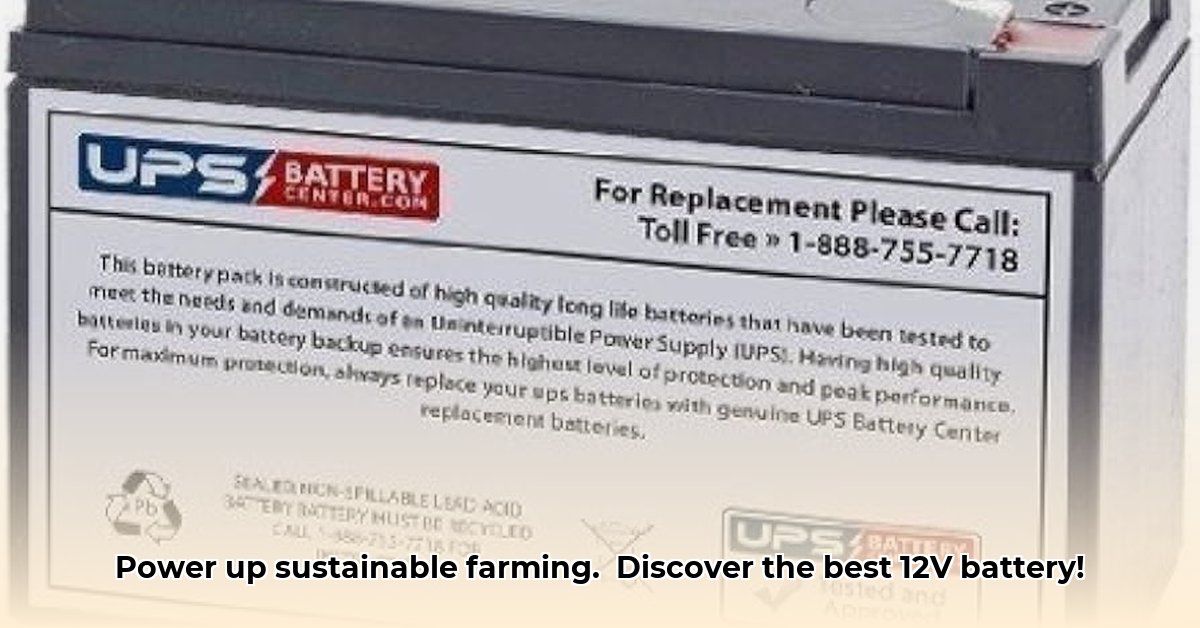
Tractor Supply 12V Battery: Powering Your Sustainable Farm
The Tractor Supply 12V battery is more than just a power source; it's a crucial component for modern sustainable farming practices. This guide provides a comprehensive understanding of its applications, maintenance, and troubleshooting, enabling you to optimize its use in your agricultural operations. From powering electric fences to supporting irrigation systems, this versatile battery enhances efficiency and minimizes environmental impact. But how can you harness its full potential? Let's delve into the specifics. For information on Mahindra tractor battery replacement, check out this helpful resource.
Understanding Your Tractor Supply 12V Battery: Key Specifications and Types
Before exploring applications, understanding the battery's specifications is paramount. Key terms like "Amp-hours" (Ah), "Cold Cranking Amps" (CCA), and "Reserve Capacity" (RC) dictate its performance. Ah represents the battery's capacity (higher is better for longer runtimes). CCA indicates its ability to deliver high current for starting engines in cold conditions. RC signifies how long it can supply power at a specific rate. A higher RC is preferable for extended applications.
Choosing the right battery type is critical. "Starting" batteries deliver short bursts of high power, ideal for quick engine starts. Conversely, "deep-cycle" batteries provide consistent power over extended periods, perfectly suited for electric fences and pumps. Deep-cycle batteries generally boast higher Ah ratings. Don't overlook physical dimensions and weight—essential factors for installation and portability. Isn't it surprising how often seemingly minor details significantly impact efficiency?
Powering Your Sustainable Farm: Practical Applications
The Tractor Supply 12V battery offers diverse applications within sustainable agriculture:
1. Electric Fencing: Electric fences are a humane and energy-efficient method for livestock management. Deep-cycle batteries, with their consistent power delivery, are the optimal choice. Battery lifespan depends on factors like fence length, soil conductivity, and pulse frequency. Consider integrating solar charging to maximize battery life and reduce reliance on the grid. Does this mean you could potentially reduce your carbon footprint substantially?
2. Water Pumping: Efficient irrigation is vital for sustainable farming. A 12V battery can power various water pumps, though pump capacity dictates battery requirements. Pump power consumption (in watts) determines the necessary battery capacity. Underestimating the pump's needs results in a quickly depleted battery and insufficient water supply. How accurately can you calculate your pump's power needs to avoid this common pitfall?
3. Additional Applications: Beyond electric fencing and water pumps, a 12V battery can power portable sprayers, provide lighting for night work, operate small radios, or even charge your phone.
Installation and Maintenance: Maximizing Battery Lifespan
Proper installation and maintenance are crucial for maximizing battery life.
1. Installation:
1. Safety: Always disconnect the negative (-) terminal first. Wear safety glasses and gloves.
2. Secure Mounting: A stable mount prevents movement and damage.
3. Connections: Connect the positive (+) terminal first, then the negative (-). Ensure clean, tight connections. Corroded terminals significantly reduce performance.
2. Maintenance:
1. Cleaning: Regularly clean terminals with a wire brush and baking soda solution to prevent corrosion.
2. Charging: Use a charger designed for your battery type (flooded lead-acid, gel-cell, AGM, etc.). Avoid overcharging, which can damage the battery, and undercharging, which can lead to sulfation (reduced capacity).
3. Storage: Store batteries in a cool, dry place and recharge periodically during extended storage.
Knowing the right charging regimen can increase battery life by up to 25%. Are you maximizing your battery's lifespan through these crucial maintenance steps?
Troubleshooting: Common Problems and Solutions
Despite proper care, problems might arise:
- Low Charge: Check connections, charger functionality, and for parasitic drains (accessories drawing power even when off).
- Battery Failure: A dead battery may have a faulty cell, internal damage, or sulfation. Replacement might be necessary.
- Slow Charging: Slow charging suggests a poor connection, high internal resistance, or a faulty charger.
Addressing these issues promptly helps avoid significant downtime and expense.
Conclusion: Powering a Sustainable Future
The Tractor Supply 12V battery is an indispensable tool for sustainable farming. By understanding its specifications, implementing proper maintenance, and troubleshooting effectively, you can ensure its reliable performance extends the functionality and efficiency of your farming practices. Remember, a well-maintained battery significantly contributes to a successful and sustainable agricultural operation.